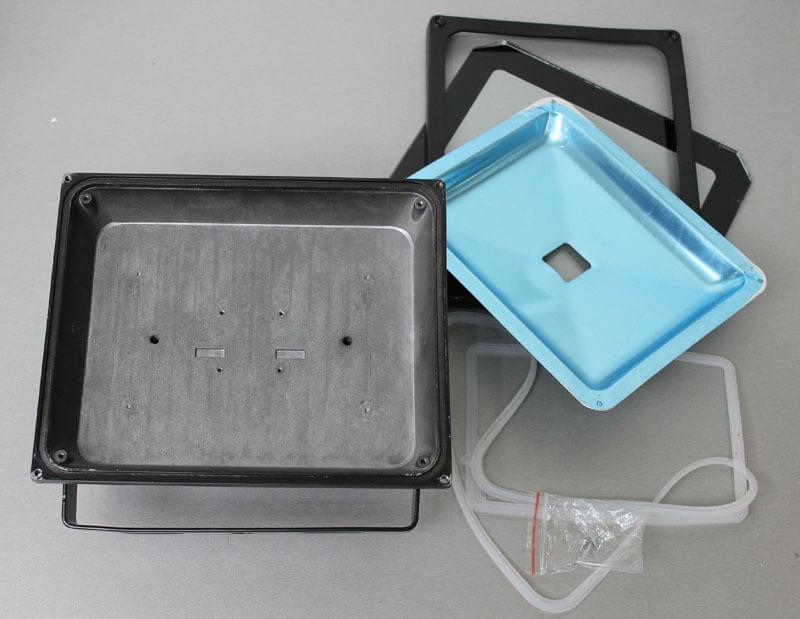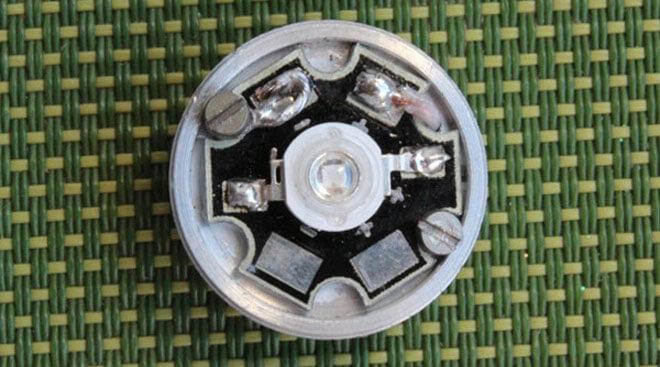How to make a spotlight yourself
LED devices are rapidly gaining ground in the market of lighting technology. Their advantages - low power consumption with high light output, the ability to choose the light spectrum according to personal preference, a long service life. The market offers a large number of LED lights, but sometimes there is a need to make such a device with your own hands.
Step-by-step process
Below is a step-by-step instruction on how to create a homemade spotlight yourself. It is not difficult with minimal skills and tools.
Drawing and diagram
Let's consider a general scheme for the inclusion of LEDs to create a spotlight. Since one radiating element has a small power, it is necessary to take several LEDs to create sufficient light flux. This is a typical scheme, in fact, it may consist of a single chain, the chain may consist of a single element, and the entire circuit may consist of a single LED. Practical schemes may also have some differences, but fundamentally common: LEDs are included in a matrix with a current-limiting resistor. Calculation of the elements of the spotlight will be given below. It is even better to use an electronic current regulator, a driver, instead of a resistor, but that is a topic for a separate article separate article.
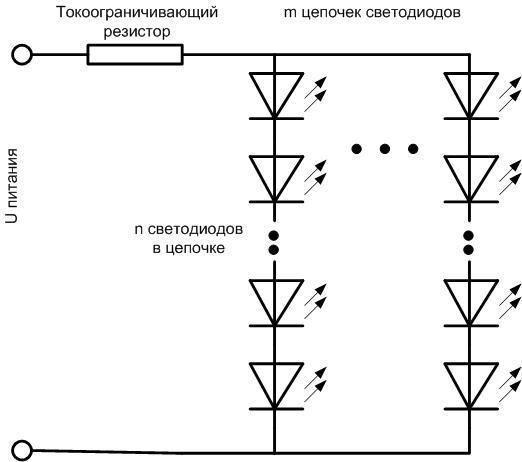
Important! LEDs can be powered by AC or DC voltage, but if the circuit uses a driver instead of a resistorIn this case the voltage must be constant.
Selecting the enclosure
There are two approaches to selecting an enclosure:
- Find the enclosure first, and match everything else to the size of the enclosure. This way is relevant if the requirements of dimensions, mounting, etc. are more important than the other parameters.
- If the most important criterion is the power and luminous flux, and everything else can be done on site, then the case is chosen last, when all the other components will be available, or their dimensions will be known.
Whichever option prevails, the spotlight housing can be selected by one of three methods:
- Take an old spotlight (halogen or incandescent), carefully disassemble it and throw away the obsolete stuffing (or use it for other purposes).Housing from an old halogen light fixture.
- Purchase the housing from a lighting supply store. This method can be expensive financially, but is good for technical and aesthetic reasons.
- Make the body yourself. If you have skilful hands, materials and tools, the shell of the homemade flashlight can be anything. It can be incorporated into any design.
Whichever way the shell is chosen, it should be borne in mind that it should simultaneously serve as a radiator for heat removal from the radiating elements. The more powerful the illuminator is supposed to be built, the more important this requirement is. Therefore it is better to make the aluminum shell for 50+ W spotlights (it has higher thermal conductivity) or to provide mounting of LED unit on a separate heatsink and heat dissipation from it.
Selecting the lamp
"The lamp will be chosen on the basis of two parameters:
- The power of the future spotlight. It makes no sense to make it less than 30 W, in practice devices from 50 W will be used, a really bright light can be obtained from a source not less than 100 W.
- Voltage. For household purposes, it is better to set the voltage of 220V - you will not need to look for a power source. But you can calculate a string of LEDs for 12 V if you intend to be powered from a car on-board network. Or any other voltage if you want to power the spotlight from the existing power supply.
Wherever it says watts in the article, it means "illuminating" power - the equivalent of the corresponding incandescent lamp, not the actual power consumed.
Next, you have to choose LEDs, available at hand or to be purchased. Two necessary parameters for calculating:
- The direct voltage of the LED;
- operating current in normal mode (80-90% of the maximum current).
Video: Redesigning the spotlight. Putting a 50 W LED.
Parameters of typical elements are shown in the table.
| LED size | Voltage, V (U) | Current, mA (I) |
| 3 mm | 2,1 | 20 |
| 5 mm | 2,3 | 20 |
| 5 mm with high brightness | 3,6 | 75 |
| Cree XLamp MX3 (SMD) | 3,7 | 350 |
Determine the circuit based on the number of LEDs. Suppose there is a matrix of m chains of LEDs connected in parallel, n elements in a chain connected in series. Calculate the voltage applied to the chain by the formula Ucomm=U*n and the current consumption by the formula Icomm=I*m. Then find the value of resistor R=(Source-Upps)/Ipps (in kilohms!) and its power P=(Source-Upps)*Ipps in milliwatts. Because LEDs have different parameters it is recommended to measure actual current and correct the resistor values.
Assembly of the illuminator
First of all you need to assemble the matrix of LEDs, not forgetting the resistor. This can be done on a board made of foil textolite or hinged. But in each case, the design of heat dissipation must be thought through in advance.
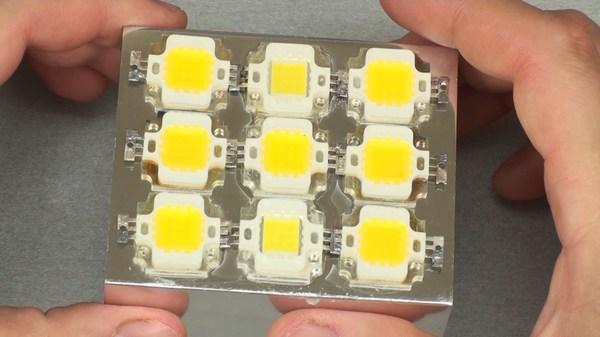
The next step is to make a reflector. To do this, you can glue a compartment with radiating elements with ordinary foil.
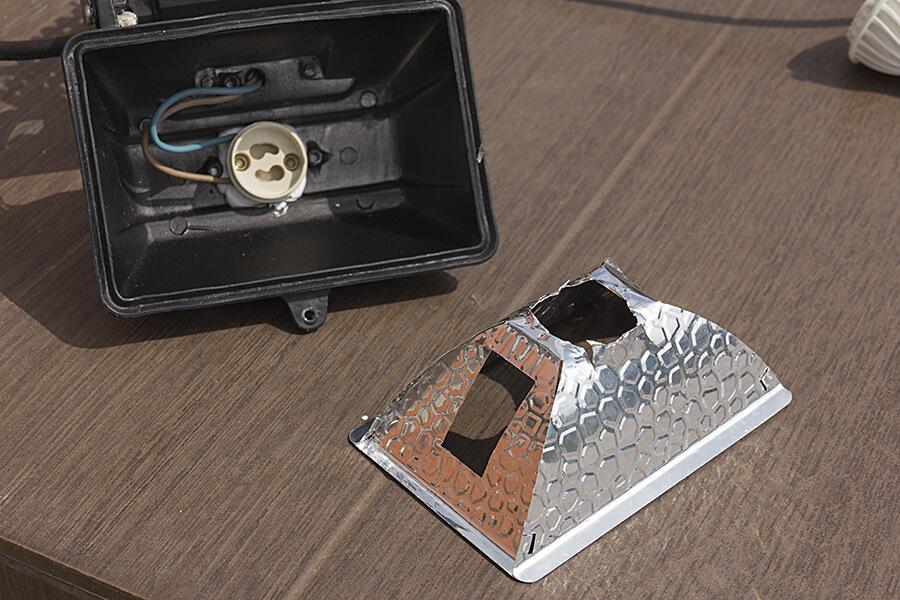
Next, you need to fix the matrix in the case, solder and bring out the power wire. If the calculations were correct, when you turn on the lighting device will give a bright light.
How you can use the spotlight
The most logical application of the LED floodlight, made with their own hands - is to illuminate the territory of the house plot, garage, etc. But the imagination of a skilled craftsman is not limited to this. You can come up with a design of portable lighting device and use it for studio photo and video shooting.
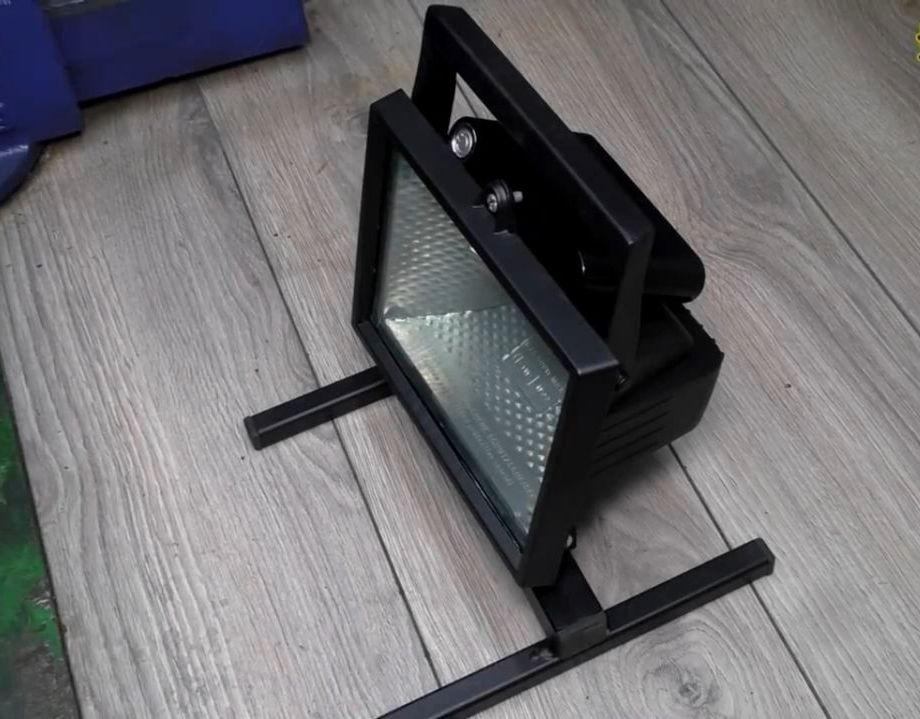
A small lamp for 24 V voltage can add efficiency to regular car lighting when driving in off-road conditions (but it is forbidden to use homemade devices when driving on public roads!). You can also use such a floodlight (or several) for aesthetic purposes - for accent lighting of buildings. Everything is limited only by the fantasy of the master and the skill of his hands.
